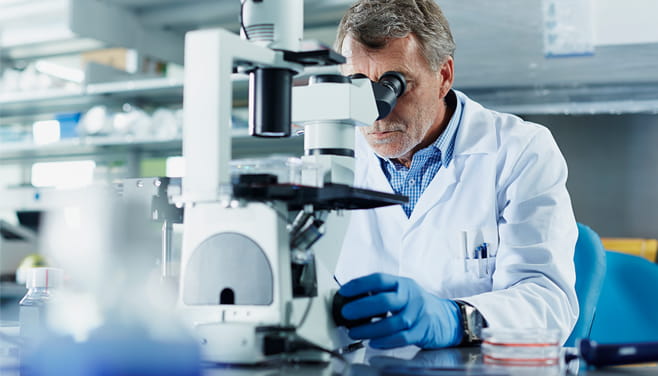Brain Aneurysms
U.S. PATIENTS:713.790.3333
Find a Specialist Near You
World-class neurosurgeons at the Houston Methodist Cerebrovascular Center diagnose and treat every type and severity of brain aneurysm. We use the most advanced and least invasive techniques and technologies to provide optimal outcomes.
We provide comprehensive monitoring and treatment options — including clinical trial therapies that are not yet widely available at other institutions. Houston Methodist brain aneurysm experts take an interdisciplinary approach to provide custom treatment plans that address the underlying causes of brain aneurysms.
Diagnosing & Treating Brain Aneurysms
What causes brain aneurysms?
- Atherosclerosis (hardening of the arteries in the brain)
- Brain tumors
- Circulatory disorders
- Congenital abnormalities
- Family history of brain aneurysm
- Genetic mutations
- Head injuries
- Infection
- Smoking
- Uncontrolled high blood pressure
How is a brain aneurysm diagnosed?
- Blurred or double vision
- Decreased feeling in the face
- Dilated pupils
- Headaches
- Pain above and behind the eye
- Numbness or weakness
If a brain aneurysm ruptures — tears, bursts or leaks blood between the skull and brain — a severe, potentially fatal subarachnoid hemorrhage could occur. Call 911 if you or a loved one experience brain aneurysm or stroke symptoms.
To diagnose a brain aneurysm, we begin with a discussion of your personal and family history. Next, we order imaging exams such as MRI, CT and cerebral angiography to rule out other cerebrovascular conditions, locate problematic blood vessels and determine the risk of rupture.
From there, the integrated Houston Methodist brain aneurysm team will develop a treatment plan based on the risk of rupture and type of aneurysm you have:
- Fusiform aneurysms – this type expands the artery wall in all directions. However, these aneurysms rarely rupture.
- Saccular (“berry”) aneurysm – this type accounts for 80-90% of brain aneurysms and typically develops in large arteries at the base of the brain. Often called berry aneurysms, they are characterized by small protrusions that look like a blossoming stem.
What treatment options are available?
Small brain aneurysms might never require treatment. Houston Methodist’s neurology team will monitor the aneurysm through regular visits and imaging scans to watch for changes in the size, shape or severity of the aneurysm.
Aneurysms that cause symptoms or are at risk of rupture should be treated to reduce the risk of stroke. As the first comprehensive stroke center in the U.S., Houston Methodist’s interdisciplinary team provides the most advanced neurosurgical and endovascular brain aneurysm treatments:
- Clipping – A neurosurgeon places a small, permanent metal clip around the aneurysm stem, outside the blood vessel. The clip cuts off blood flow to the aneurysm, preventing it from bleeding and causing it to shrink.
- Coiling – This procedure seals the aneurysm off from its blood vessel from the inside. Our neurosurgeons use next-generation image guidance to locate, measure and place a coil inside the aneurysm that fills it completely, preventing blood flow. Stents hold the coil in place.
- Stenting – The neurosurgeon places thin mesh tubes inside the blood vessel, which act as scaffolding to support the vessel walls.
- Liquid embolics – This innovative treatment embolizes aneurysms using surgical glue that solidifies on contact with blood. We inject the glue into the aneurysm and hold it in place temporarily with a balloon that prevents leakage. The liquid fills the aneurysm, depriving it of blood.
- Occlusion and bypass – If an aneurysm has severely damaged an artery, we can permanently stop blood flow to it and reroute the blood flow to a healthy blood vessel. We can remove a portion of blood vessel from another part of the body and graft it into the brain.
After your procedure, you will recover in our state-of-the-art neurointensive care unit. Specialized nurses and neurologists will monitor your progress and recommend next steps, which may include physical or occupational therapy, depending on the severity of your aneurysm.
Find a Clinical Trial
Find Patient Resources


